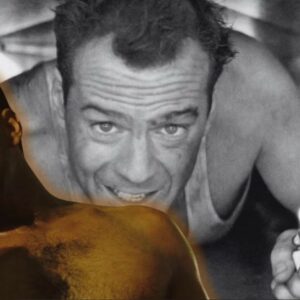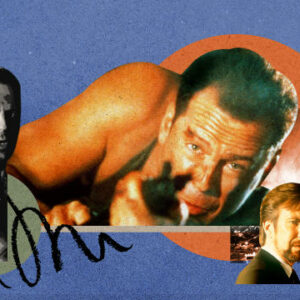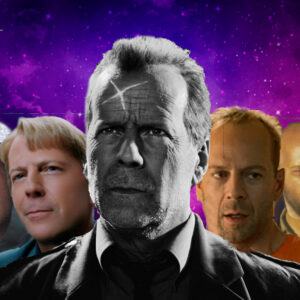Bruce Willis is an iconic actor known for his rugged charm, distinctive voice, and a unique approach to heroism. Over the years, he has carved out a niche in Hollywood that highlights his ability to portray characters who defy traditional notions of heroism and justice. His roles often embody a distinct strain of the anti-justice archetype, challenging conventional moral frameworks and redefining what it means to be a hero. In this article, we’ll explore how Willis has consistently brought to life characters who operate on the fringes of traditional justice, examining key roles that showcase his mastery of this archetype and the impact these performances have had on both audiences and the genre.
The Evolution of the Anti-Justice Archetype
To understand Bruce Willis’s contribution to the anti-justice archetype, it’s essential to first define what this archetype entails. Traditional heroes are often depicted as morally upright figures who adhere to established norms and work within the confines of the law. They typically represent justice and righteousness, acting in ways that align with societal expectations.
In contrast, the anti-justice archetype embodies a more complex and often morally ambiguous figure. These characters operate outside the conventional boundaries of law and order, challenging established notions of right and wrong. They may pursue personal vendettas, operate outside the legal system, or even engage in morally questionable actions in their quest for justice. This archetype often questions the effectiveness and fairness of institutional justice, offering a more nuanced and sometimes cynical view of morality.
Bruce Willis’s portrayal of such characters has been instrumental in popularizing and evolving this archetype. His roles often blur the lines between heroism and villainy, making him a quintessential figure in exploring the complexities of justice and morality.
Early Career and the Formation of Willis’s Persona
Bruce Willis began his career in the 1980s, gaining recognition for his work in television and film. His breakthrough role came with the television series “Moonlighting,” where he showcased his talent for blending comedy with drama. This versatility would become a hallmark of his career, allowing him to navigate a wide range of characters and genres.
It was in the 1990s, however, that Willis truly began to establish himself as a leading figure in the anti-justice archetype. The success of “Die Hard” (1988) marked a turning point, introducing audiences to John McClane, a character who would become a defining figure in Willis’s career and a template for the anti-justice hero.
John McClane: The Blueprint of the Anti-Justice Hero
“Die Hard” introduced Bruce Willis as John McClane, a New York City cop who finds himself in a high-stakes situation during a Christmas party in a Los Angeles skyscraper. Unlike traditional action heroes, McClane is not a paragon of virtue or a man of impeccable moral standing. Instead, he is a blue-collar cop with a troubled personal life, a sharp wit, and a willingness to bend the rules to get the job done.
McClane’s approach to justice is unconventional. He doesn’t always adhere to protocol, and his methods often involve significant collateral damage. He operates outside the bounds of traditional law enforcement, relying on his instincts and street smarts rather than formal procedures. This portrayal subverts the traditional action hero mold, emphasizing a more personal and raw form of heroism.
Willis’s performance as McClane is marked by a sense of authenticity and vulnerability. McClane’s struggles, both physical and emotional, make him relatable and grounded. His imperfections and flaws are central to his character, highlighting the complexity of his moral compass. This nuanced portrayal set a new standard for action heroes and laid the groundwork for future roles in Willis’s career.
The Evolution of McClane and Its Impact
The success of “Die Hard” led to several sequels, each further developing the McClane character while reinforcing the anti-justice archetype. In “Die Hard 2: Die Harder” (1990), McClane finds himself in another high-stakes situation, this time dealing with terrorists who have taken over an airport. His approach remains consistent: he operates outside the law, relying on his own judgment and resourcefulness to confront the threat.
The subsequent sequels, “Die Hard with a Vengeance” (1995) and “Live Free or Die Hard” (2007), continue to explore McClane’s character while adapting to new contexts and challenges. Each installment presents McClane with increasingly difficult situations, further showcasing his ability to defy traditional notions of justice and heroism. The character’s evolution reflects a broader trend in action cinema, where the anti-justice hero becomes a more prominent and influential archetype.
Other Notable Anti-Justice Roles
Beyond the “Die Hard” series, Bruce Willis has taken on a variety of roles that further explore the anti-justice archetype. Each of these characters adds depth and variety to Willis’s portrayal of morally ambiguous heroes.
“The Last Boy Scout” (1991)
In “The Last Boy Scout,” Willis plays Joe Hallenbeck, a private detective with a troubled past who becomes entangled in a conspiracy involving a corrupt politician and a football team owner. Hallenbeck is a classic example of the anti-justice hero: he operates outside the law, driven by personal motives rather than a commitment to institutional justice. His actions are often driven by self-interest and a desire for personal redemption, highlighting the complexity of his moral landscape.
“Pulp Fiction” (1994)
In Quentin Tarantino’s “Pulp Fiction,” Willis takes on the role of Butch Coolidge, a boxer who double-crosses a crime boss and must navigate a dangerous underworld to survive. Butch’s actions and decisions are driven by personal motivations and a sense of self-preservation rather than adherence to traditional notions of justice. His journey through the film challenges conventional morality and showcases Willis’s ability to embody the anti-justice archetype in a diverse range of contexts.
“Unbreakable” (2000) and “Glass” (2019)
In M. Night Shyamalan’s “Unbreakable” and its sequels, Willis portrays David Dunn, a security guard with superhuman abilities who grapples with his role as a vigilante. Unlike traditional superheroes, Dunn’s journey is marked by a sense of moral ambiguity and personal conflict. His actions are driven by a desire to protect others and a sense of responsibility rather than a strict adherence to the law. This portrayal further explores the complexities of the anti-justice archetype and its impact on the character’s personal and moral journey.
“Sin City” (2005)
In “Sin City,” directed by Robert Rodriguez and Frank Miller, Willis plays Hartigan, an aging cop who seeks to protect a young girl from a dangerous criminal underworld. Hartigan’s actions are driven by a personal sense of duty and redemption, rather than adherence to conventional notions of justice. His character exemplifies the anti-justice archetype through his willingness to operate outside the law and make morally complex decisions in pursuit of his goals.
The Impact of Willis’s Anti-Justice Archetype on Cinema
Bruce Willis’s portrayal of anti-justice heroes has had a significant impact on both audiences and the film industry. His characters challenge traditional notions of heroism and justice, offering a more nuanced and complex view of morality. This approach has resonated with audiences, who are drawn to the authenticity and vulnerability of Willis’s characters.
The success of Willis’s roles has also influenced the broader action genre, leading to the emergence of similar characters in films and television. The anti-justice archetype has become a prominent feature of contemporary action cinema, reflecting a growing interest in exploring the moral complexities of heroism and justice.
Willis’s performances have demonstrated that heroism can be defined in various ways, and that characters who operate outside conventional boundaries can still embody a compelling and relatable form of heroism. His ability to navigate these complexities with authenticity and depth has cemented his status as a key figure in the evolution of the anti-justice archetype.
Conclusion
Bruce Willis’s career has been marked by his ability to portray characters who challenge traditional notions of heroism and justice. Through his roles as John McClane, Joe Hallenbeck, Butch Coolidge, David Dunn, and Hartigan, Willis has perfected the anti-justice archetype, offering audiences a more nuanced and complex view of morality.
His performances have had a lasting impact on the film industry, influencing the portrayal of heroes and shaping the evolution of the action genre. Willis’s characters defy conventional expectations, highlighting the complexity and authenticity of anti-justice heroes. As such, Bruce Willis remains a defining figure in the exploration of this archetype, offering a compelling and multifaceted view of heroism and justice in contemporary cinema.





